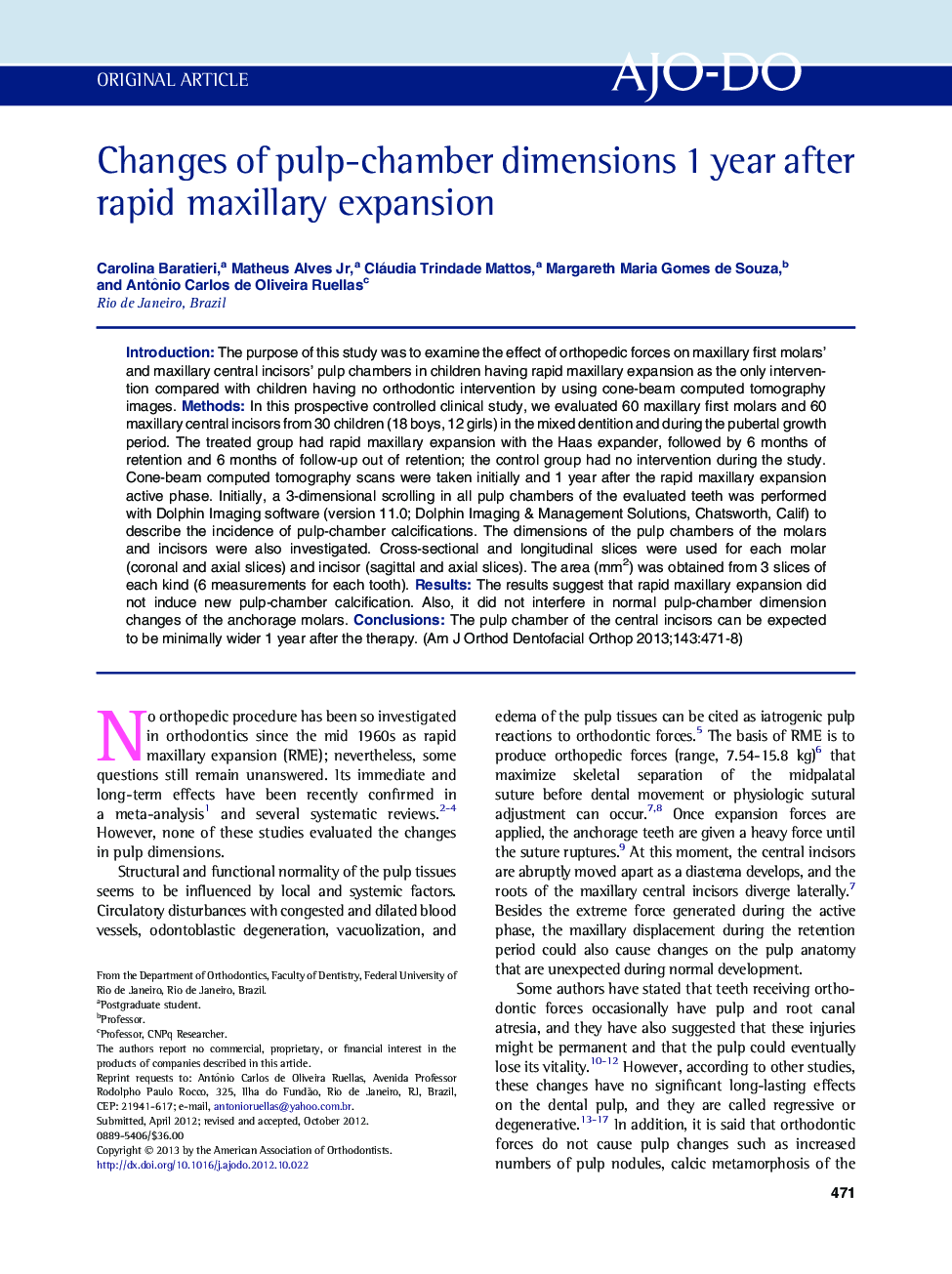| Article ID | Journal | Published Year | Pages | File Type |
|---|---|---|---|---|
| 3116376 | American Journal of Orthodontics and Dentofacial Orthopedics | 2013 | 8 Pages |
IntroductionThe purpose of this study was to examine the effect of orthopedic forces on maxillary first molars' and maxillary central incisors' pulp chambers in children having rapid maxillary expansion as the only intervention compared with children having no orthodontic intervention by using cone-beam computed tomography images.MethodsIn this prospective controlled clinical study, we evaluated 60 maxillary first molars and 60 maxillary central incisors from 30 children (18 boys, 12 girls) in the mixed dentition and during the pubertal growth period. The treated group had rapid maxillary expansion with the Haas expander, followed by 6 months of retention and 6 months of follow-up out of retention; the control group had no intervention during the study. Cone-beam computed tomography scans were taken initially and 1 year after the rapid maxillary expansion active phase. Initially, a 3-dimensional scrolling in all pulp chambers of the evaluated teeth was performed with Dolphin Imaging software (version 11.0; Dolphin Imaging & Management Solutions, Chatsworth, Calif) to describe the incidence of pulp-chamber calcifications. The dimensions of the pulp chambers of the molars and incisors were also investigated. Cross-sectional and longitudinal slices were used for each molar (coronal and axial slices) and incisor (sagittal and axial slices). The area (mm2) was obtained from 3 slices of each kind (6 measurements for each tooth).ResultsThe results suggest that rapid maxillary expansion did not induce new pulp-chamber calcification. Also, it did not interfere in normal pulp-chamber dimension changes of the anchorage molars.ConclusionsThe pulp chamber of the central incisors can be expected to be minimally wider 1 year after the therapy.
